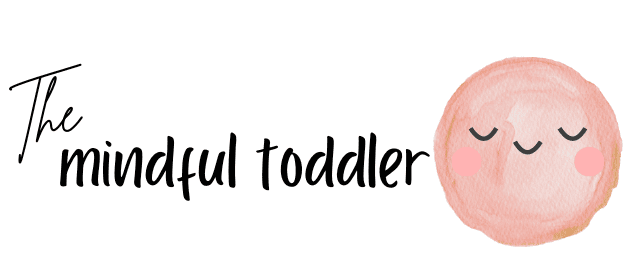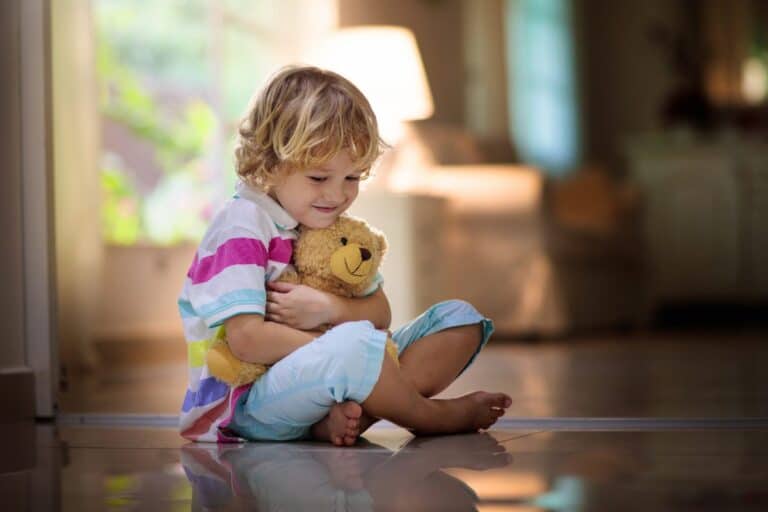Easy Homemade Lava Lamp Experiment for Toddlers and Preschoolers
Did you ever dream of having a lava lamp experiment when you were a kid? I know I did! There’s just something magical about those colorful blobs bouncing around in liquid light.
Now, as a parent, you can bring that same wonder to your own children, but with a hands-on twist! In this post, we’re going to walk through the easiest homemade lava lamp experiment you can do at home.
It’s fun, quick, educational, and perfect for toddlers, preschoolers, and even early elementary-aged kids. Whether you’re a teacher looking for a science activity or a parent searching for indoor fun, this lava lamp experiment is a fantastic choice.
This engaging DIY activity combines science and play, helping little ones explore chemical reactions, density, and movement, all through the magic of bubbling, colorful “lava.” With a few basic ingredients and minimal prep, you’ll create a sensory-rich, visually captivating experience your kids will ask for again and again.
So gather your materials and get ready to wow your little ones with this bubbly lava lamp experiment!
Pin This Post For Later:

Why Try the Lava Lamp Experiment?
The lava lamp experiment is more than just a cool visual experience. It’s an engaging way to introduce your kids to science concepts like density, chemical reactions, and color mixing. And the best part? It doesn’t require any fancy equipment or lab coats. With just a few household ingredients and a little curiosity, your kids can explore how homemade lava lamps work, and have a blast doing it!
This project is also a wonderful opportunity to spend quality time together, talk about observations, and encourage questions. Whether you’re homeschooling, creating a fun weekend activity, or just want to try something new, the DIY lava lamp with Alka Seltzer is a guaranteed hit.
Supplies You’ll Need for the Lava Lamp Project
You don’t need much to get started with your homemade lava lamp experiment. Here’s what you’ll need:
- A glass jar (a 16 oz mason jar works great for a mason jar lava lamp)
- Water (¼ cup)
- Paint (you can also use food coloring, but paint gives richer color)
- Coconut oil (you can substitute with baby oil, vegetable oil, or canola oil)
- Alka Seltzer tablets
You can grab some of these items online:
These simple ingredients come together to make a truly memorable and kid-friendly science experiment.

Lava Lamp Experiment Instructions
Here’s how to make a lava lamp in a bottle with your kids. Follow these easy step-by-step instructions to create your own homemade lava lamp. This activity is fun, hands-on, and perfect for engaging curious little minds:
Step 1: Fill the Jar with Oil
Take your clean glass jar or mason jar and fill it halfway with coconut oil. This will act as the top layer of your lava lamp. Coconut oil has a slightly yellow tint, which gives the experiment a warm glow. For a clearer result, you can substitute it with baby oil.

Step 2: Prepare the Colored Water
In a separate cup, mix about 2–3 teaspoons of paint with approximately ¼ cup of water. Stir it thoroughly until the paint is fully dissolved. This will become your lava lamp’s colored water layer.
Step 3: Add Colored Water to the Jar
Slowly pour the colored water into the jar with the oil. Be sure to pour gently to avoid splashing. Watch how the water sinks to the bottom due to its higher density compared to the oil.

Step 4: Let It Settle
Wait a minute or two to allow the layers to fully separate. This part is a great opportunity to explain to kids how oil and water don’t mix because they have different densities and molecular structures.

Step 5: Add the Alka Seltzer Tablet
Now it’s time for the fun! Drop in one Alka Seltzer tablet. If your jar is small, you can break the tablet in half. As it reacts with the water, it releases carbon dioxide bubbles that carry the colored water upward.
Step 6: Watch the Magic Happen
Sit back and enjoy the show! The bubbles will rise and fall, creating a mesmerizing lava lamp effect. You’ll see blobs of color bounce up and float back down, just like a store-bought lava lamp. Kids will be amazed at how the mixture comes alive!

Step 7: Repeat and Explore
Once the bubbling stops, simply add another Alka Seltzer tablet to start the reaction again. You can experiment with different colors, amounts of paint, or even add glitter for a sparkling touch.
This simple activity is a perfect blend of art and science, making it one of the best DIY lava lamp experiments for toddlers and preschoolers.
Science Behind the DIY Lava Lamp Experiment
This DIY homemade lava lamp experiment teaches kids about:
- Density: Water is heavier than oil, so it sinks.
- Chemical Reactions: Alka Seltzer reacts with water to release carbon dioxide, creating bubbles.
- Suspension and Movement: Gas bubbles lift the colored water, then fall as the gas escapes.
These are quick experiments for kids that introduce big ideas in small, accessible ways. Kids won’t just see a neat effect, they’ll start asking “why?” and “how?”

Why This DIY Lava Lamp Experiment Is Great for Toddlers and Preschoolers
- Safe Ingredients: No harsh chemicals involved.
- Short Attention Span Friendly: The bubbling reaction happens quickly, which is perfect for little learners.
- Sensory Engagement: Color, movement, and sound stimulate their senses.
- Repeatable Fun: You can do this over and over again.
This Lava Lamp Experiment is one of those easy kids science experiments at home that never gets old. Kids of all ages, from curious toddlers to school-age siblings, will love it.
Tips and Variations for Your Lava Lamp Experiment
- Use baby oil instead of coconut oil for clearer visuals.
- Try different colors of paint (we love blue, purple, and pink!)
- Add a pinch of glitter to make it a glitter lava lamp.
- Try using a clear soda bottle or recycled water bottle instead of a mason jar.
- Want an even bigger sensory activity? Make mini lava lamps DIY and line them up in different colors.
Want to experiment without fizz? Try a DIY lava lamp without Alka-Seltzer using baking soda and vinegar. Just be sure to manage the mess!
Looking for holiday-themed variations? Try a red and green “Elf lava lamp” for Christmas or orange and black for Halloween.
Educational Opportunities: Turning Play into Learning
This isn’t just fun, it’s educational. Here’s how you can build learning moments into the play:
- Ask your kids: “Which liquid do you think is heavier?”
- Observe: “What happens when you drop the tablet?”
- Discuss the reaction: “Where do the bubbles come from?”
This is why the lava lamp experiment is so valuable. It makes science hands-on and relatable, all while they think they’re just playing.
You can also connect this experiment to topics like:
- States of Matter (solid tablet, liquid oil/water, gas bubbles)
- Chemical Reactions
- Cause and Effect
And because it’s easy to do, it’s one of those school age experiments you can repeat throughout the year.

Storage, Cleanup, and Safety
- Always supervise young kids during the activity.
- Dispose of your lava lamp mixture after a day or two.
- Clean up is easy, just pour the contents into a disposable container and wipe your jar clean.
- Don’t seal the jar with the Alka Seltzer inside—it releases gas, which can build pressure.
These home made lava lamp experiment aren’t permanent, but they’re such a fun and really fun craft you can redo anytime.
Creative Extensions: Lava Lamp Suncatchers & Floor Is Lava Activities
Turn the fun into more arts and crafts time:
- Make a lava lamp suncatcher: Let your child paint bubbles on clear plastic, then tape it to a sunny window.
- Create a “floor is lava” obstacle course before or after the activity, let the bubbling lava theme carry through your day!
These ideas keep your little ones active and engaged in a themed day of fun.
Final Thoughts: Why the Lava Lamp Experiment Should Be on Every Parent’s List
The lava lamp experiment is one of the most engaging, creative, and educational easy kids science experiments at home. It combines vibrant colors, exciting fizzing reactions, and simple prep to deliver wow-worthy results.
This activity is perfect for rainy afternoons, homeschool science units, or even birthday party stations. Whether you’re looking to do DIY lava lamps with water, explore a diy lava lamp with Alka Seltzer, or teach how to make a lava lamp without alcohol, this activity has a variation for everyone.
So go ahead and grab your mason jar. You now have everything you need to create home made lava lamp experiment that will leave your kids giggling, learning, and begging for more.
If you loved this activity, don’t forget to check out more of our really fun crafts, seasonal activities, and kid-friendly science experiments right here on the blog. We’re always bubbling with new ideas!
Check out other fun sensory bottle ideas:
- Calming Sensory Bottle
- Sensory Bottle with Hair Gel
- Unicorn Sensory Bottle
- I Spy Sensory Bottle
- Pom Pom Sensory Bottle
- 4th of July Sensory Bottle
- Butterfly Sensory Bottle
- Magnetic Sensory Bottle
- DIY Rain Stick Shakers
- Summer Sensory Bottle
- Easter Sensory Bottle
- Fall Sensory Bottle
- Winter Find-And-See Sensory Bottle
- Calming Sensory Bottle







